Mark Anthony Neal's Blog, page 553
December 16, 2016
The Hanging: Part Two -- The Beast | #LennonLacy
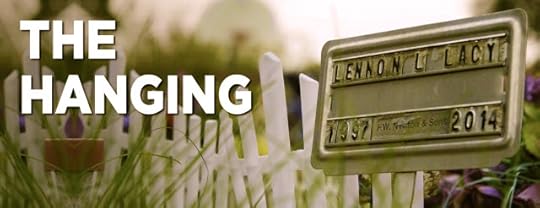 'The town where a 17-year-old African American male was found hanging two years ago has a strong sense of community. But there’s also a history of racial strife and intolerance. Even the town’s local legend about a “beast of Bladenboro” has racial overtones. Independent Lens on PBS and North Carolina UNC-TV and radio explore the town’s racial divide and how it might have played a part in Lennon Lacy’s death.' -- UNC-TV
'The town where a 17-year-old African American male was found hanging two years ago has a strong sense of community. But there’s also a history of racial strife and intolerance. Even the town’s local legend about a “beast of Bladenboro” has racial overtones. Independent Lens on PBS and North Carolina UNC-TV and radio explore the town’s racial divide and how it might have played a part in Lennon Lacy’s death.' -- UNC-TV
Published on December 16, 2016 10:07
Tackling Race and Identity Through Dance with Kyle Abraham + Reggie Wilson
 'Two new dance performances that draw their inspiration from examinations of race and society are premiering in New York City this month. One, choreographed by Reggie Wilson, draws from historic African American figures; the second, by Kyle Abraham, looks at the pain and repercussions that mass incarceration inflicts on families.' -- +WNYC
'Two new dance performances that draw their inspiration from examinations of race and society are premiering in New York City this month. One, choreographed by Reggie Wilson, draws from historic African American figures; the second, by Kyle Abraham, looks at the pain and repercussions that mass incarceration inflicts on families.' -- +WNYC
Published on December 16, 2016 07:43
An Afro Blue Christmas
 'The 12 young men and women in Howard University's premier vocal jazz ensemble, Afro Blue, come together for this holiday special, featuring standards of the season.' -- +WNYC
'The 12 young men and women in Howard University's premier vocal jazz ensemble, Afro Blue, come together for this holiday special, featuring standards of the season.' -- +WNYC
Published on December 16, 2016 07:29
What Does It Mean to be Southern?: An Interview with Barkley L. Hendricks
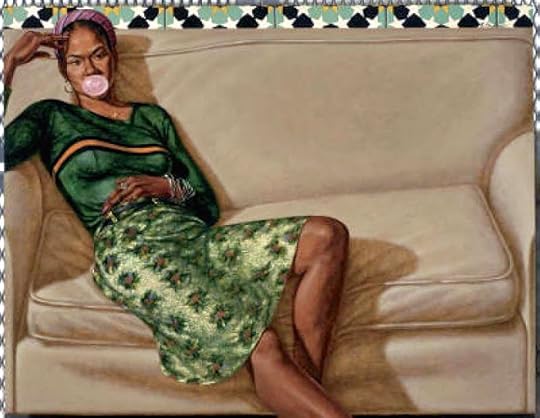 SWEET THANG (LYNN JENKINS): 1975-1976, oil on linen canvas'What does it mean to be southern? In this episode of Nasher Museum: Open Studio, you’re listening to Southern Accent artist Barkley L. Hendricks, one of 60 artists in the exhibition Southern Accent: Seeking the American South in Contemporary Art. Barkley L. Hendricks, who was born and raised in Philadelphia, does not exactly identify with the South.'
SWEET THANG (LYNN JENKINS): 1975-1976, oil on linen canvas'What does it mean to be southern? In this episode of Nasher Museum: Open Studio, you’re listening to Southern Accent artist Barkley L. Hendricks, one of 60 artists in the exhibition Southern Accent: Seeking the American South in Contemporary Art. Barkley L. Hendricks, who was born and raised in Philadelphia, does not exactly identify with the South.'
Published on December 16, 2016 07:18
Understanding the Grim Economics of Incarcerated Labor
 'Prison labor activist Azzurra Crispino explains how a nation-wide prison work stoppage revealed mass incarceration's large-scale exploitation of incarcerated labor, and the brutal lengths the state will go to protect its interests -- and calls for the public to embrace love in the face of fear, and humanizing prisoners as a starting point on the road to prison abolition. Azzurra last spoke to This Is Hell! on day two of the nation-wide prison work stoppage.'
'Prison labor activist Azzurra Crispino explains how a nation-wide prison work stoppage revealed mass incarceration's large-scale exploitation of incarcerated labor, and the brutal lengths the state will go to protect its interests -- and calls for the public to embrace love in the face of fear, and humanizing prisoners as a starting point on the road to prison abolition. Azzurra last spoke to This Is Hell! on day two of the nation-wide prison work stoppage.'
Published on December 16, 2016 07:04
December 15, 2016
“I Can’t Turn You Loose”: Otis Redding and the Kinship of Live Soul by Mark Anthony Neal
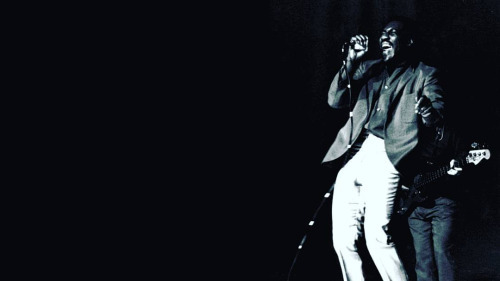 “I Can’t Turn You Loose”: Otis Redding and the Kinship of Live Soulby Mark Anthony Neal | @NewBlackMan | NewBlackMan (in Exile)
“I Can’t Turn You Loose”: Otis Redding and the Kinship of Live Soulby Mark Anthony Neal | @NewBlackMan | NewBlackMan (in Exile)“Everything we’re doing here is being recorded, so say anything you want to say. Make yourself feel good ‘cause you might hear yourself again.” -- James Brown, Live at the Apollo, Vol II (1968)
Otis Redding’s reputation as a leading voice -- the leading, perhaps -- of a generation of stellar Soul Men is rarely disputed. But it is revisionist history to believe that Otis Redding presided over planet Soul in the 1960s anywhere to the extent Ray Charles or Sam Cooke, who largely defined the genre for male vocalists. Like Cooke’s underground running partner Malcolm X, Otis Redding legacy has largely been the product of The Archive.
Redding’s ascent to mainstream pop-stardom largely begins in the last year of his life -- a triumph tour headlining a Stax revue in Europe which produced the album Otis Redding: Live in Europe, released in July of 1967 five months before his death. A month before Live in Europe’s release, Redding made his memorable appearance at the Monterey Pop Festival of which Redding and Jimi Hendrix were the breakout artists. Ironically, a live recording of their performances, branded as Historic Performances Recorded at the Monterey International Pop Festival, was released weeks before the untimely death of Hendrix, the album serving as a symbolic closing of the 1960s -- Redding literally leaves the stage saying “I gotta go, don’t wanna go.”
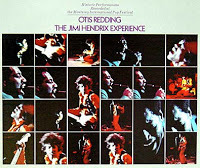 Redding’s iconic performances of “Try a Little Tenderness” and “I’ve Been Loving You Too Long” -- two of his most notable ballads -- at Monterey provides clear evidence of his stage presence. At 6’ 6’’ Redding commanded a stage, like a lanky NBA Small forward who possessed a voice of thunder, and audiences were palpably mesmerized, as much for his cool and coy deployment of Black masculine energy -- in ways that only James Brown and Wilson Pickett surpassed -- and the sheer brilliance of his singing. But I’d like to suggest that Otis Redding unmoored from the recording studio was about more than just his comfort on the stage, but part of an ethic of kinship on Redding’s part that could only find resonance on stage, and in particular live on the Chitlin Circuit.
Redding’s iconic performances of “Try a Little Tenderness” and “I’ve Been Loving You Too Long” -- two of his most notable ballads -- at Monterey provides clear evidence of his stage presence. At 6’ 6’’ Redding commanded a stage, like a lanky NBA Small forward who possessed a voice of thunder, and audiences were palpably mesmerized, as much for his cool and coy deployment of Black masculine energy -- in ways that only James Brown and Wilson Pickett surpassed -- and the sheer brilliance of his singing. But I’d like to suggest that Otis Redding unmoored from the recording studio was about more than just his comfort on the stage, but part of an ethic of kinship on Redding’s part that could only find resonance on stage, and in particular live on the Chitlin Circuit.Live in Europe was not Redding’s first live recording; a full year before the European tour, Redding and his working band (notably not the MGs, who backed Stax artists in the studio) headed out to Los Angeles to do a three-night, eight-show stand at the Whisky-a-Go-Go. Located on the Sunset Strip, the club was not the typical segregated Chitlin’ Circuit haunt that Redding and most Black artists of the era were relegated to, but rather a space that in the 1960s helped launch the careers of The Doors, Buffalo Springfield, The Byrds, and in later years groups like Van Halen and Mötley Crüe.
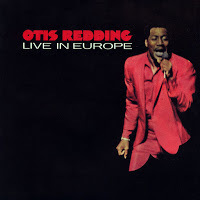
No doubt the Whiskey-a-Go-Go booking was a breakthrough for Redding, and representative of the kinds of breakthroughs that Black artists sought in efforts to reach broader audiences. The example of Berry Gordy’s calculated attempts to bring Motown to Las Vegas or Aretha Franklin’s celebrated residency at The Fillmore West in 1971, were such breakthroughs. If venues like the Whiskey-a-Go-Go and The Fillmore West were wins, the Chitlin Circuit was not a loss; there was a freedom incumbent in those segregated spaces that not only fed the artistry of Black performers but importantly a connection to fictive kin; up in tight Chitlin Circuit spaces, Black performers were not confronting an audience, but folk who could would be family. The pure genius of Redding, was his ability to bring that element of kinship on stage with him, wherever he went.
Though Stax recorded Redding’s show at the Whiskey-a-Go-Go, the resultant album In Person at the Whiskey-a-Go-Go would not be released until 10 months after Redding’s death, for all the obvious reasons one might imagine; to “profit” on the tragedy of his death. As Rob Bowman writes in his history of the Stax label, “Otis was forced to use his road band because the MGs were too busy in the Stax studio...the resulting tapes were simply not up to snuff. Redding’s band was as ragged as can be, with the horns being painfully out of tune on virtually every song.” (Soulsville, U.S.A., 96). The so-called “quality” or lack of, of the sessions explains why Stax initially canned the project.
Redding’s catalogue offers a unique glimpse into the political economy of the music industry in the 1960s. As has been noted by the aforementioned Bowman and Nelson George in his classic The Death of Rhythm and Blues, as a fledgling regional “race” label, Stax entered into a distribution deal with Atlantic to garner a national audience; Redding, Booker T. and the MGs and “loaners” Sam & Dave were the most successful of those artists, in no small part due to the deal. But a largely obscure feature on the contract dictated that if and when that distribution deal ended and Atlantic rejected its first right to buy the label, Stax’s entire catalogue would become Atlantic’s property (and why they lowballed Stax with their offer).
Atlantic released four albums of previously unreleased Redding recordings on their ATCO subsidiary from 1968 to 1970 including now classic songs like “Love Man”, “Hard to Handle” (and check the Juice Crew's classic "The Symphony" for its use in another archive), and “I Got Dreams to Remember”; In Person at the Whiskey A-Go-Go was among those releases.
The original ten-song playlist from In Person at the Whiskey A-Go-Go featured Redding standards such as the classic “Mr. Pitiful,” a cover James Brown’s “Papa’s Got a Brand New Bag,” the ballad “These Arms of Mine,” his cover of The Rolling Stone “Satisfaction (I Can’t Get No)” and “Respect” -- a song that Redding wrote, but was made one of the greatest pop hits of the 1960s by Aretha Franklin. The latter two tracks appeared on Redding’s third and perhaps strongest studio album, Otis Blue: Otis Redding Sings Soul (1965).
Otis Blue also featured tributes to Sam Cooke (“Shake” + “A Change is Gonna Come”) and the aforementioned signature “I’ve Been Loving’ You Too Long.” Bowman notes of Redding’s take on Cooke’s “A Change is Gonna Come” -- what might be thought of as both tribute and the taking of the torch from a dead man’s grip -- “The triplet and two eighths rhythmic interjection is merely a whisper in Cooke’s original; on Otis Blue it sounds like a sledgehammer. Otis is at his elliptical best with words, sometimes syllables, bursting from his vocal chord one moment, being swallowed and garbled the next.” (58)
Yet the song that Redding chose to open all seven shows, over those nights in early April of 1966, was a track that didn’t appear on any Redding album up to that point. “I Can’t Turn You Loose” was a Redding original that appeared on the B-side of “Just One More Day,” a single from 1965 that eventually shows up as the opening track on The Soul Album (1966). Though Stax apparently didn’t have much faith in the song when it was recorded, Redding’s own preference for the song as a warm-up, eventually landed the song on a compilation The History of Otis Redding, released a month before his death.
Stax seem more invested in Redding’s cover of The Rolling Stones’ “Satisfaction,” logically figuring it would broaden Redding’s audience, though as Bowman notes in Soulsville U.S.A., Redding had never heard the Stones’ version of the song before recording it, as the choice to record it occurred on a whim by guitarist Steve Cropper. The studio version of “Satisfaction” was one of Redding’s highest charting pop songs to that point in his career and he closed out every set at the Whiskey-A-Go-Go with it.
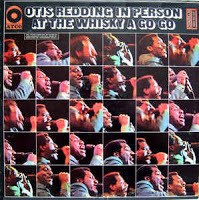
“Satisfaction” and “I Can’t Turn You Loose,” which Redding opened with, are the only two songs that Redding performed during all seven sets. The version of “I Can’t Turn You Loose” that opens In Performance at the Whiskey-A-Go-Go was taken from that very first show, remarkable in its 4-plus minute length and the clear sense that on at least two occasions, Redding could have ended the song before the four minute mark. Drawing from a bit of James Brown’s showmanship -- Brown would perform this elaborate ordeal in which he wouldn’t leave the stage -- by Redding’s genius was to open the show with that gesture, as a calling out to kinship.
In the recently released Live At The Whisky A Go Go: The Complete Recordings, which captures all seven shows over three nights, listeners gets some sense of the ways that Redding paced himself in an era when it was normal, particularly on the Chitlin Circuit to do two shows a night. There was of course some basic utility to this arrangement: artists made their money, not off the sales of their records, but largely by the work they did on the road.
No doubt Stax was also skeptical that a live recording would translate into record sales, not unlike the pushback that James Brown faced from his label when he initially proposed his Live at the Apollo album in 1963. When his label balked, Brown financed the recording himself and the album, for all intents, established Brown, who had toiled for almost a decade on the Chitlin Circuit, as a bonafide star or someone who could legitimately claim to be Soul Brother #1.
Whereas the first set of the opening night at The Whiskey-a-Go-Go features a fire and brimstone version on “I Can’t Turn You Loose” -- and likely the reason Stax chose it for the original album -- on subsequent nights the version of the song that appears in the opening set feels more like a Blues stroll. Yet Redding never stopped giving; the version of the song that Redding performs as the third set on the second night, with his riffs from Sam and Dave’s “hold on...I’m coming,” is such an example, as it logs it at over six-minutes.
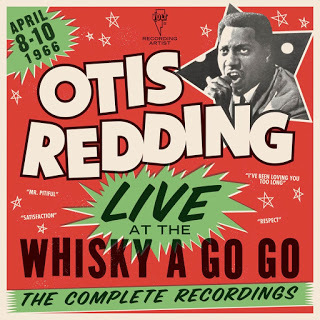
In his recollection of Redding’s time at the Whiskey-a-Go-Go, music critic Pete Johnson wrote, “He was a magic singer with an unquenchable store of energy and a great flittering band. Crowds never sat still when he was on stage nor could they stay quiet when he asked them for a response, because he gave them too much to leave them strangers.” (quoted in Robert Gordon’s Respect Yourself: Stax Records and the Soul Explosion, 124). It was the same energy that Aretha Franklin brought to the stage (and pulpit) on both her Live at the Fillmore West (backed by King Curtis and with a cameo by Ray Charles) and Amazing Grace albums. Redding famously chided Franklin for “stealing” his “Respect” but in the full quote he continues, “but she’s a friend.”
The notion of friendship or kinship was critical to understanding the role that Redding played on stage; Soul music was not just about sharing the Black musical experience with so-called White America, but with sharing an ethics of faith and fellowship -- Redding having the faith that his music would move audiences and that the music would be the conduit for true kinship. Not surprisingly, a decade after Redding's death the late John Belushi and Dan Aykroyd would use the intro horn-lines from "I Can't Turn You Loose" as part as their introduction as the Blues Brothers -- their problematic "tribute" to the Stax era. Nearly fifty years after Redding’s untimely death, Live At The Whisky A Go Go: The Complete Recordings is a thoughtful reminder of what was once possible.
+++
Mark Anthony Neal been conjuring analog for a digital world for a minute; Check him at @NewBlackMan + @LeftofBlack + BookerBBBrown on the ‘Gram + and the homebase at NewBlackMan (in Exile).
Published on December 15, 2016 07:28
December 14, 2016
Wesley Lowery: Before We Had the Right to Vote, We Had the Right to Protest
 'Before we had the right to vote, we had the right to protest, says journalist Wesley Lowery. Protests have always been part of the U.S.’s political landscape, but over the last decade it feels as though there is an increase in dissatisfaction on the fronts of all causes – there is unrest, whether it’s a genuine increase or merely wider access to media and recording devices. Lowery's book is They Can't Kill Us All: Ferguson, Baltimore, and a New Era in America's Racial Justice Movement.' -- +Big Think
'Before we had the right to vote, we had the right to protest, says journalist Wesley Lowery. Protests have always been part of the U.S.’s political landscape, but over the last decade it feels as though there is an increase in dissatisfaction on the fronts of all causes – there is unrest, whether it’s a genuine increase or merely wider access to media and recording devices. Lowery's book is They Can't Kill Us All: Ferguson, Baltimore, and a New Era in America's Racial Justice Movement.' -- +Big Think
Published on December 14, 2016 21:10
The Hanging: Part One--The Case #LennonLacy
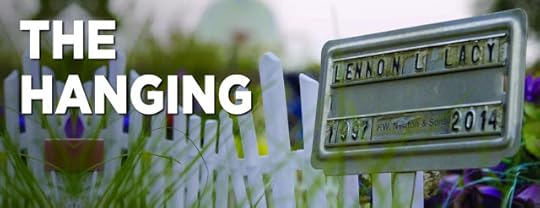 'In 2014 a 17-year-old African American male, Lennon Lacy, was found hanging from a swing set in Bladenboro, North Carolina. Local law enforcement and federal investigators ruled the hanging a suicide, but Lennon’s family remains unconvinced and suspect it was murder. Independent Lens on PBS joins forces with North Carolina's UNC-TV, producer Orlando de Guzman, and WUNC reporter Leoneda Inge to take a closer look into Lennon Lacy’s death and the mystery and controversy that surround it.' -- UNC-TV
'In 2014 a 17-year-old African American male, Lennon Lacy, was found hanging from a swing set in Bladenboro, North Carolina. Local law enforcement and federal investigators ruled the hanging a suicide, but Lennon’s family remains unconvinced and suspect it was murder. Independent Lens on PBS joins forces with North Carolina's UNC-TV, producer Orlando de Guzman, and WUNC reporter Leoneda Inge to take a closer look into Lennon Lacy’s death and the mystery and controversy that surround it.' -- UNC-TV
Published on December 14, 2016 20:54
Jazz Night in America: Eddie Palmieri -- Harlem River Drive Revisted
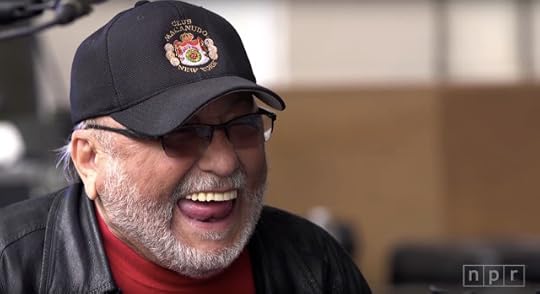 'In 1971, legendary pianist, composer, and bandleader Eddie Palmieri put out a formative album called Harlem River Drive. In the heat of racial turbulence, its lyrics addressed inequality brought against Puerto Ricans by the city of New York. It was a form of protest and a political commentary on social justice issues for the people of El Barrio, East Harlem. Almost 50 years after its release, Eddie Palmieri packed a Harlem amphitheater in the rain. No one had heard Harlem River Drive on stage in decades until now. This edition of Jazz Night In America highlights a very special moment in history.' -- +NPR
'In 1971, legendary pianist, composer, and bandleader Eddie Palmieri put out a formative album called Harlem River Drive. In the heat of racial turbulence, its lyrics addressed inequality brought against Puerto Ricans by the city of New York. It was a form of protest and a political commentary on social justice issues for the people of El Barrio, East Harlem. Almost 50 years after its release, Eddie Palmieri packed a Harlem amphitheater in the rain. No one had heard Harlem River Drive on stage in decades until now. This edition of Jazz Night In America highlights a very special moment in history.' -- +NPR
Published on December 14, 2016 20:42
Left of Black S7:E9: Erasure + Blaqueer + the Margins of Blackness with Tim’m West
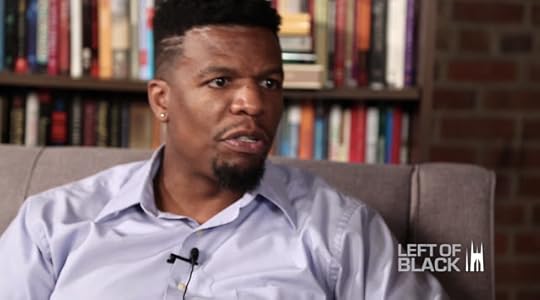 Left of Black S7:E9: Erasure + Blaqueer + the Margins of Blackness with Tim’m West
Left of Black S7:E9: Erasure + Blaqueer + the Margins of Blackness with Tim’m WestOn this episode of Left of Black activist and scholar Tim’m West (@BraveEducator) joins Mark Anthony Neal in a frank conversation of Black Queer identity and erasure in Black communities. West is an artists author, activist and founding member of the groundbreaking Hip-Hop group The Deep Dickollective (DDC).
Left of Black is a weekly Webcast hosted by Mark Anthony Neal and produced in collaboration with the John Hope Franklin Center at Duke University and in conjunction with the Center for Arts + Digital Culture + Entrepreneurship (CADCE) and the Duke Council on Race + Ethnicity
***
Follow Left of Black on Twitter: @LeftofBlack
Published on December 14, 2016 20:34
Mark Anthony Neal's Blog
- Mark Anthony Neal's profile
- 30 followers
Mark Anthony Neal isn't a Goodreads Author
(yet),
but they
do have a blog,
so here are some recent posts imported from
their feed.



